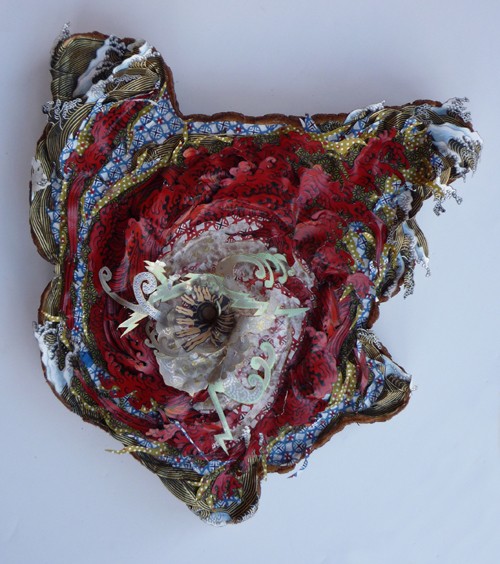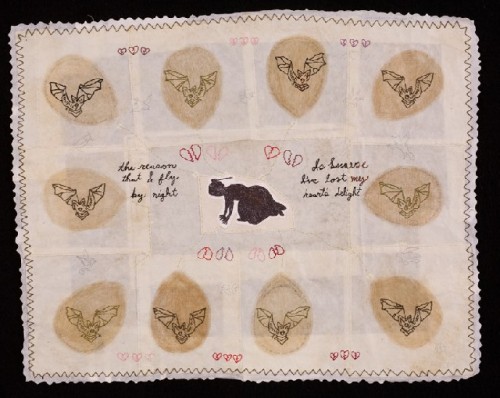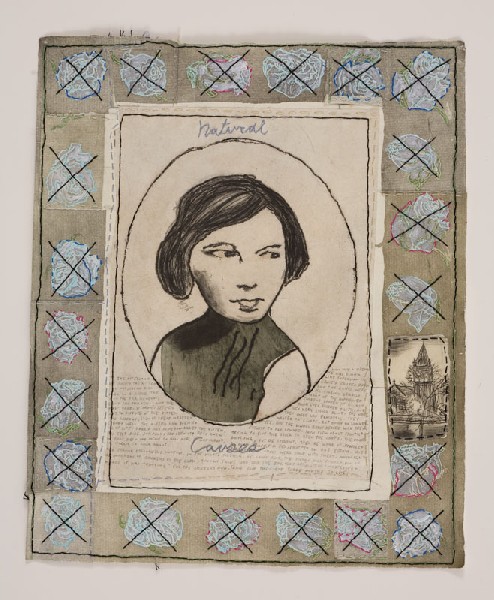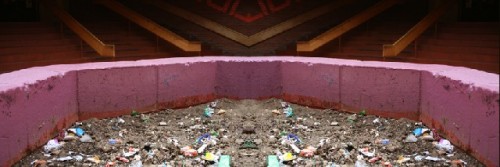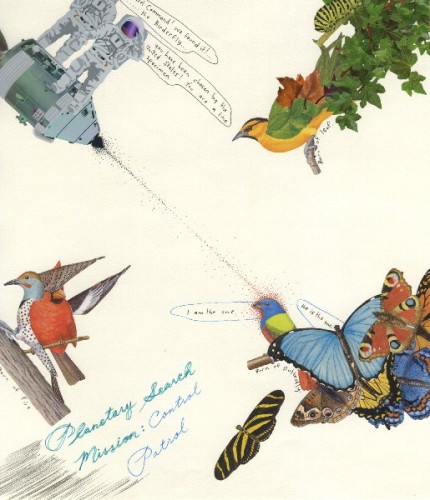Salt of the Earth at Montserrat College of Art Gallery
Six Curators Each Select One Artist
By: Shawn Hill - Jun 07, 2009
Salt of the Earth
Montserrat College of Art Gallery
Beverly, Mass,
New Art Collective 2009
June 5th to July 24th
Director Leonie Bradbury has staged a challenging summer show at Montserrat College of Art in Beverly, Mass,, one that complicates the usual down-time agenda of group shows with serious insight and moments of surprise. Bradbury invited a group of curators to each choose one artist whose work might fit her theme, an updated exploration of the familiar phrase "salt of the earth." That so many personas have conspired to make a consistent, challenging show is a pleasant surprise. Especially considering that the artists didn't make work with the theme in mind; they were chosen because some aspect of their work already seemed in synch. The end result is a challenging look into the agendas and interests of artists in our current moment, united by nothing so much as their humanity Â… or perhaps the word is humanism.
Some works are on paper, some are sculptures. All entail mixed media, including such esoteric materials as discs of cross-sectioned trees, recycled videotapes, embroidery thread, and wads of desiccated bread. There's a narrative element that may be the most telling link Â… but the stories told are ones of vulnerability, existential angst, and disturbing moments of despair. It's not that the show is gloomy or depressing; it's that it feels our pain, and posits that such suffering is one of the most reliable of all universals.
Immediately imposing is the gravity-defying, off-kilter sculpture of Antoniadis and Stone (chosen by Camilo Alvarez of Samson Projects). The central feature is a sort of brick column layered with cruddy industrial paint. This unobtrusive slice of architectural mediocrity has the temerity to bend halfway up, and as our eyes continue to track we see it wields a hammer-like slab of concrete above, as if it's ready to pound anyone who comes near. The installation takes up a corner of the gallery, and also sports a found picture of a grim former fountain or planter, now a repository of debris at the foot of a stairway. Another sculpture is a low wall covered in grubby pebbles. There's also a skewed hint of the maligned International Style in a section of metal-framed windows that seems to be sliding into the gallery floor. This ruined façade has cracks and burn holes in the Plexiglas panes that remain intact, and openings covered by plywood.
The effect of the whole is to plunge one back into the horrors of public high school, with all this faceless and defaced architecture recalling the institutional, formulaic, creative poverty of the bureaucratic assembly-line that shuffles kids through the motions of learning.
Zach Storm's (chosen by Bradbury herself) suffering is more personal; his delicate drawings, enhanced with collage cut outs, and arranged as fragile leaves fluttering on the wall, chronicle a break-up of a love affair in poignant, self-effacing detail. His detailed drawings, barely taking up space on the page, add to the sense of fragility.
Lorna Williams (chosen by Kristen Dodge of Judi Rotenberg gallery) does more elaborate collages, large-scale improvisatory works that find governing pattern in the whorls of wood on the panels she uses as a support. She cuts fabric and paper to mimic the lines in the wood, and works both abstractly and representationally. "Najja's Spirit Water" has a psychedelic quality, and features the outline of a meditating mystic.
"Untitled (Hurricane)" uses Hokusai's little claw-like wave-caps as part of a whorl of fabrics and other Asian-inspired patterns that seem to circle in a vortex, recalling recent natural disasters in that part of the world. The circular disk of wood that frames and supports this collage adds a counterpoint of order to the chaos of natural forces Williams expertly evokes.
David Curcio (chosen by the gallery's assistant director, Shana Dumont) uses his printmaking skills to create a body of collages that, in earth tones, combines embroidered captions with grim black and white images of old school houses, baby blankets and animals. In one of these intimate works, a figure in a dress has fallen to the ground under emblems of a broken heart. Large, spooky Gothic bats surround her on all sides.
Recycling is ever a contemporary theme these days, and in that spirit Deb Todd Wheeler (chosen by Leslie K. Brown) offers a sort of kit for gallery visitors to transform discarded plastic bags into flowers, while Patricia Tinajero (chosen by Cathy McLaurin of the Essex Art Center) uses old videotapes to weave frames for her digital video projections (which include bleeding feet submersed in water).
Nate McDermott (chosen by Jose Luis Blondet of the Mills Gallery) is the calm at the heart of some of these storms, with a series of solid abstractions in oil. But even here, amidst these balanced cubist forms, the predominant color is red, and a theme of purgatory might be found.

